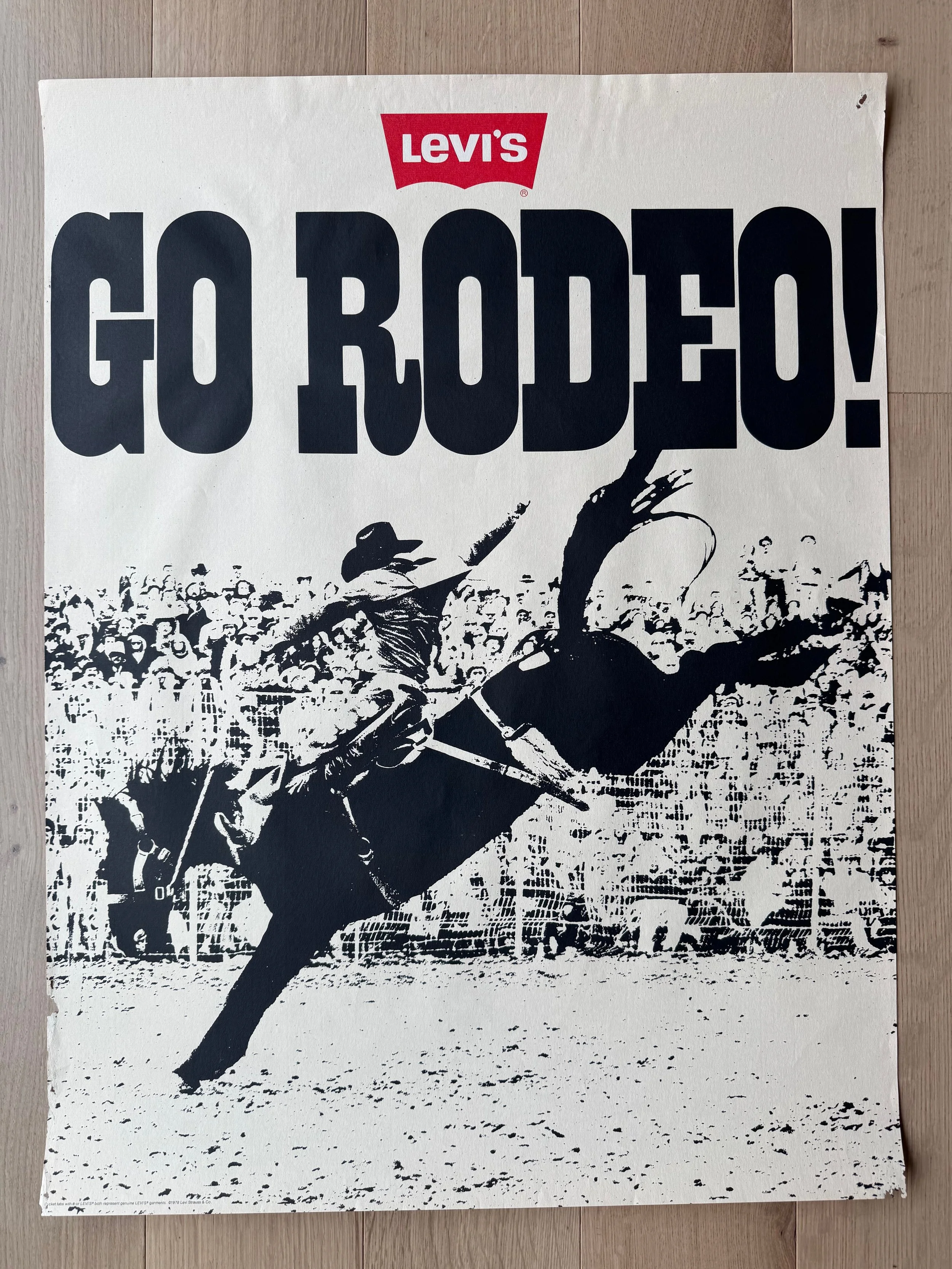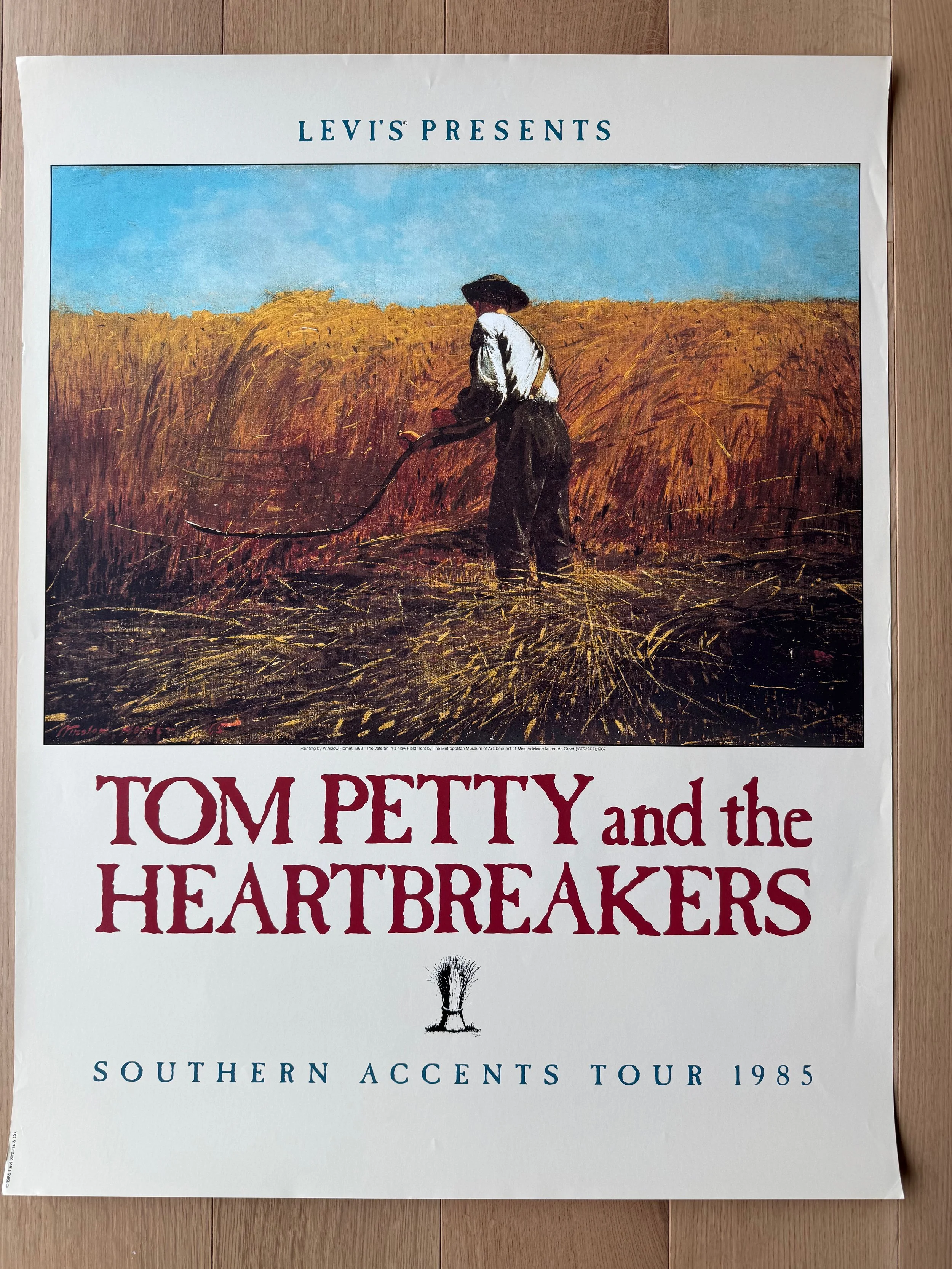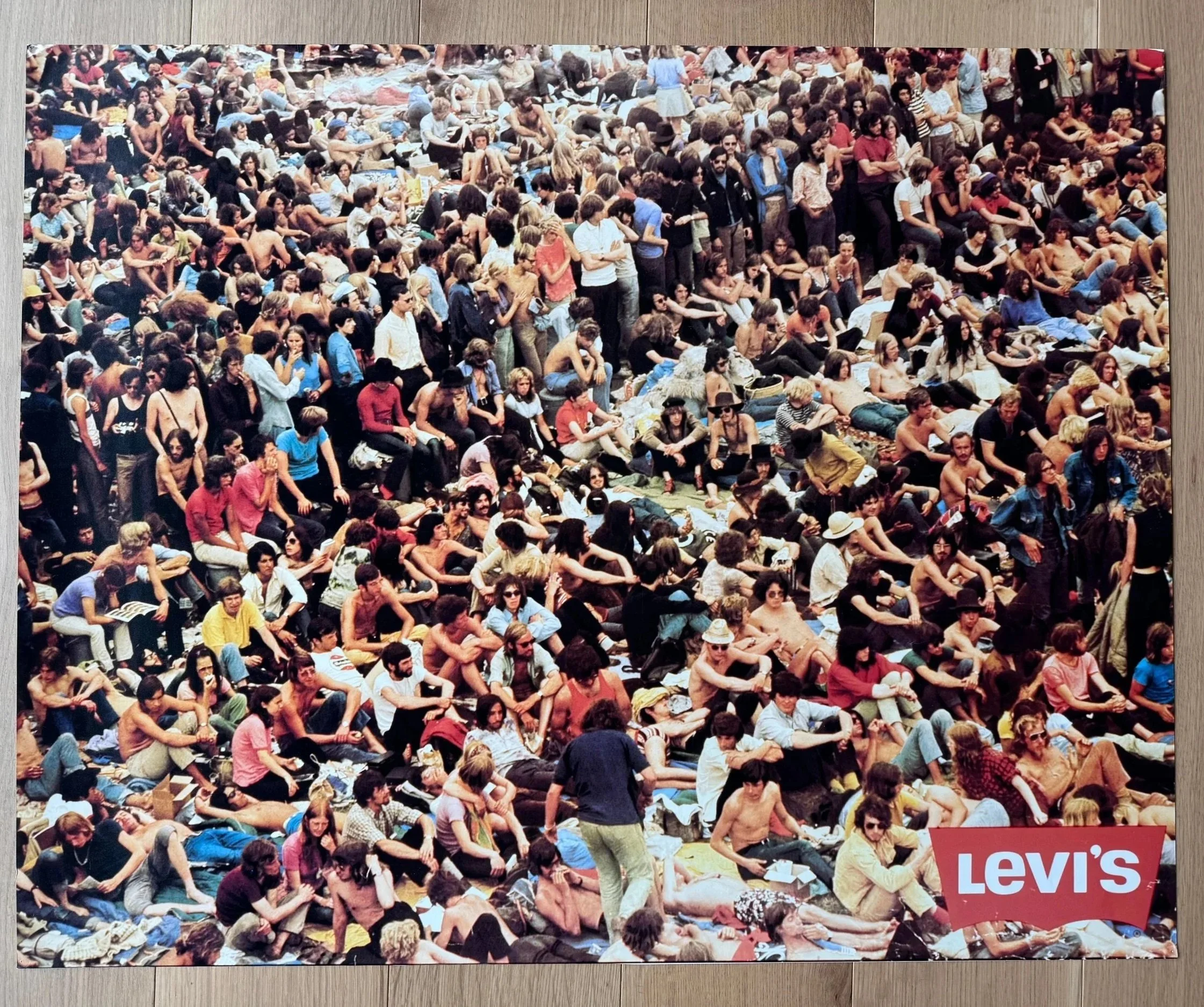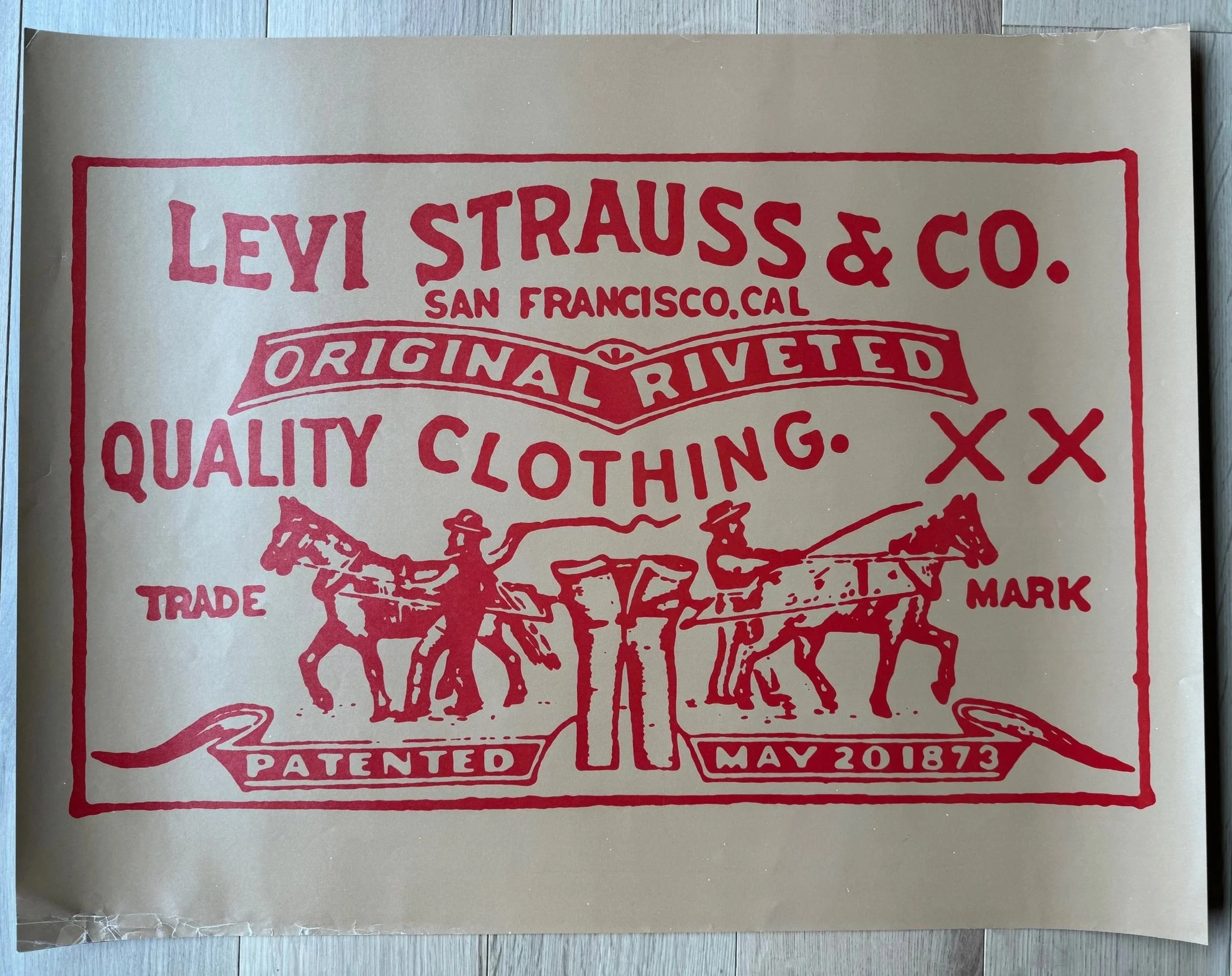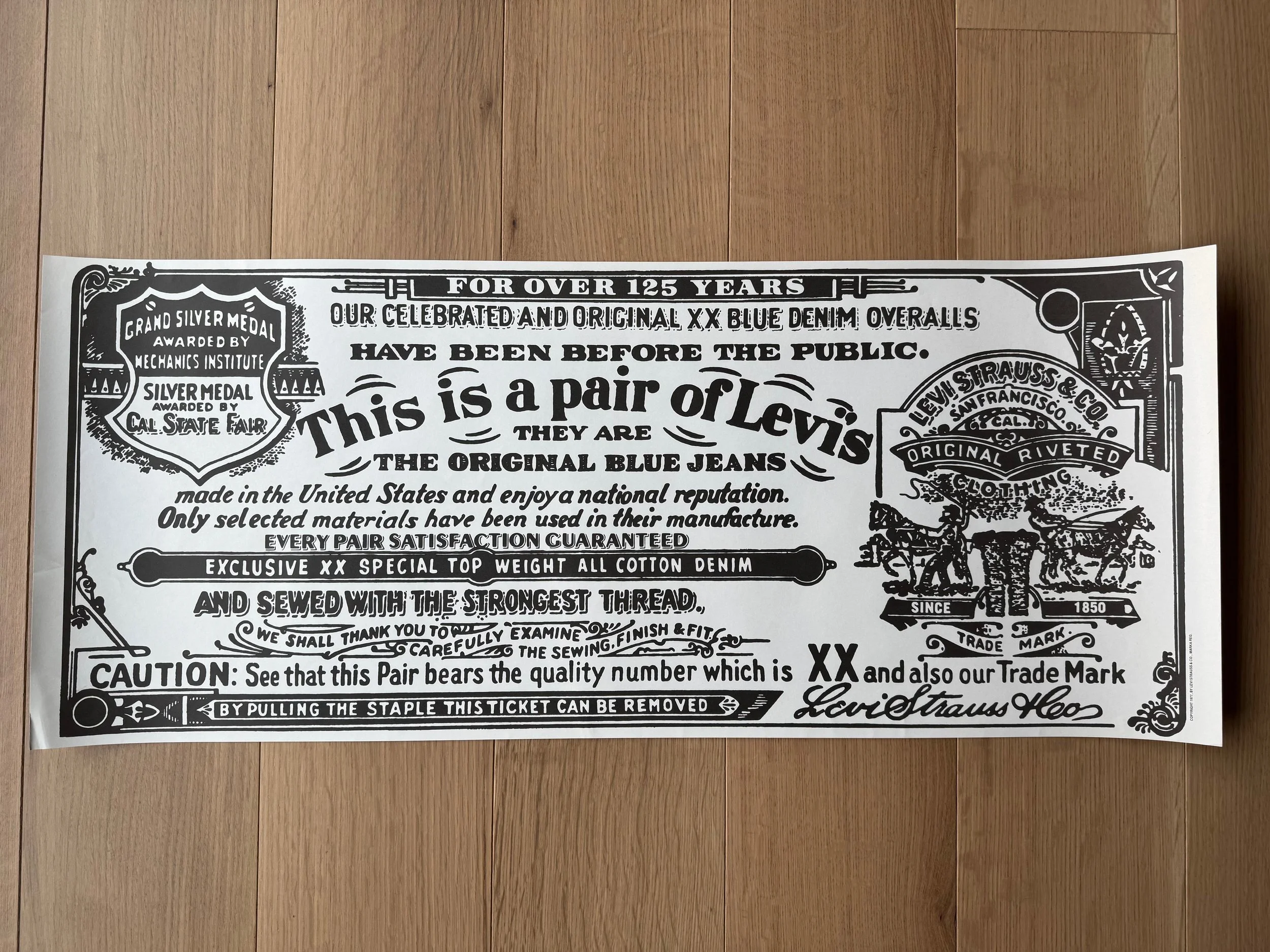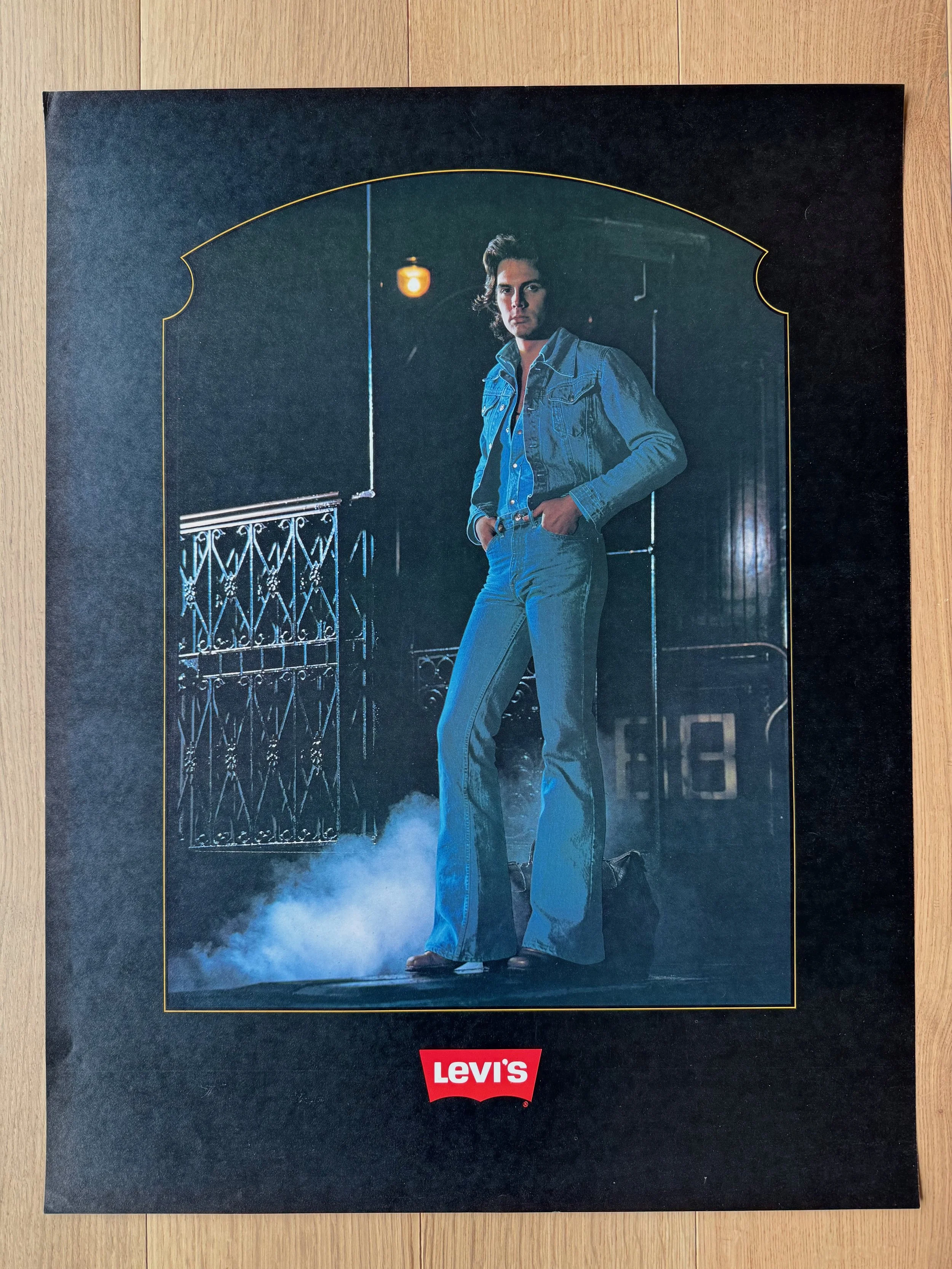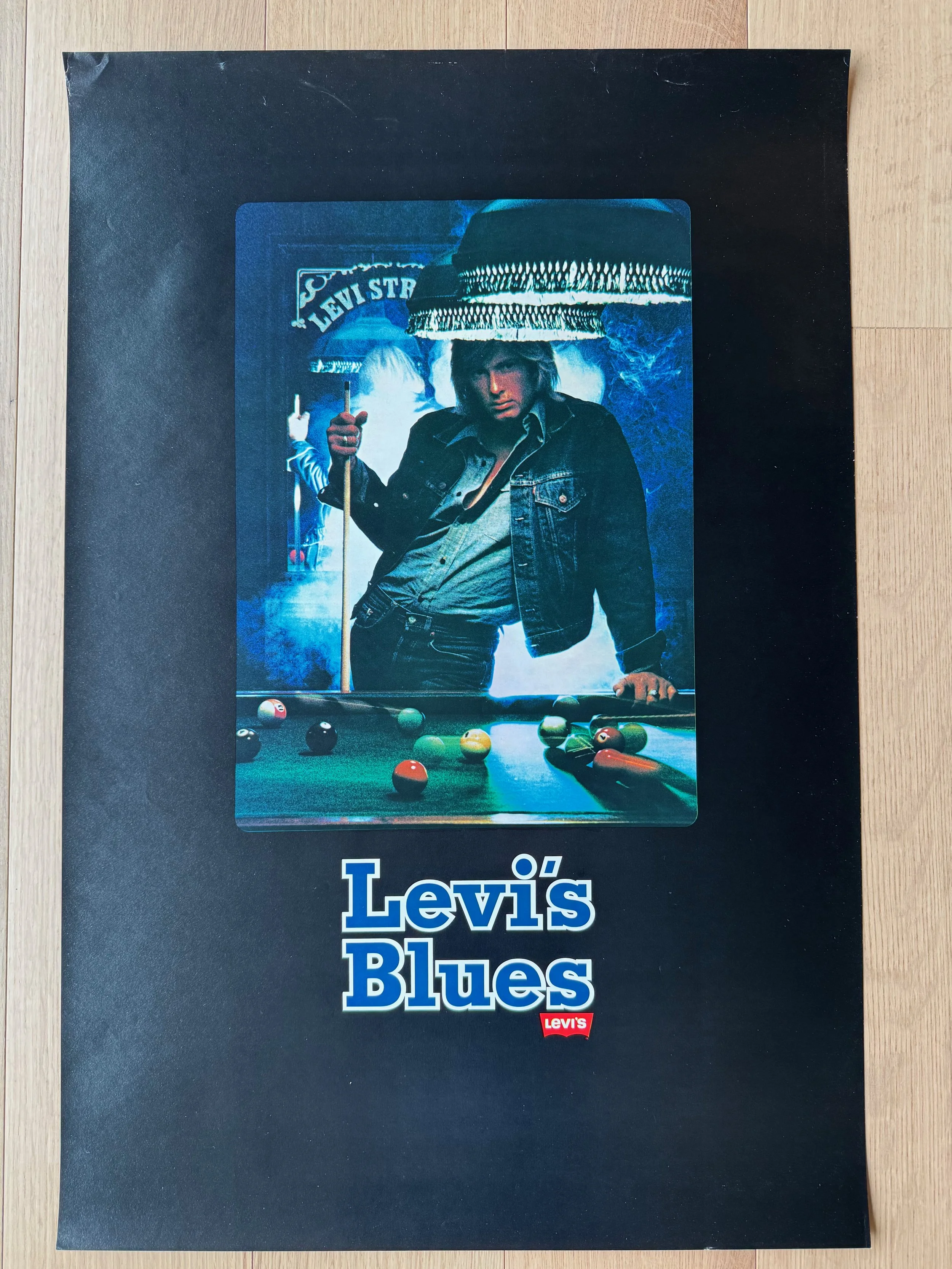Levi’s strategy in Posters
1971 - 1985
1971 its-not-woodstock-festival Poster
This famous Levi’s poster, often mistakenly believed to be from Woodstock, is of the 1970 Holland Pop Festival in Kralingen, Netherlands. levistrauss.com. Although Levi’s products can’t be specifically identified in the crowd, the unobtrusive logo in the bottom corner says “we are here for this moment.” Levi’s wouldn’t officially sponsor music artists until the 1980s, yet the brand was already an integral part of music culture by this time. This poster does not feature paid models, but rather a crowd of people who had voluntarily dressed themselves in denim to attend a music festival. It highlights the idea that Levi’s strong identity in music had materialized organically, rather than by paid advertising of corporate America that much of the 60’s &70’s counterculture movement was fighting against. It cemented Levi’s in the post-woodstock scene, and planted the seed for Levi’s long involvement in music and concert culture. Decades later, music remains core to Levi’s brand strategy.
The patch poster (~1974)
In 1886, the patent on Levi’s riveted denim pants was just 4 years away from expiring in 1890. To safeguard its market position and cement its reputation as the originator of jeans, LS&Co. introduced a distinctive leather label. The two-horse image reminded buyers of the unrivaled strength of Levi’s jeans, and effectively turned every pair of pants into a billboard for the brand.
The memorable image helped facilitate early expansion: a rancher in Arizona or a railroad worker in Nevada might not recall the name “Levi Strauss,” but they definitely knew to look for the pants with the horses on the label. Equally important, the image transcended language barriers. Not all prospective buyers were literate and spoke English, so a visual symbol was invaluable. The Two Horse design gave consumers of all backgrounds an easy way to recognize and request the product. Customers could walk into a store and ask for “the pants with two horses,” and reliably get a pair of Levi’s jeans. In fact, for decades the company’s product was colloquially known as the “Two Horse Brand” until 1928, when it finally trademarked the name “Levi’s” for its jeans.
This poster, simply a giant patch, was provided to retailers for in-store display in the 70’s. Lack of other copy speaks to how recognizable the trademark was, and continues to be today.
1978 Lifestyle Poster
This poster illustrates Levi’s push during the 70’s to expand the brand image beyond workwear and western to lifestyle. The ad sells Levi’s as a lifestyle brand with a single, candid image of personal connection. It’s an authentic moment of enjoyment, showcasing jeans as effortless attire for weekend adventures, roadtrips, outdoor concerts, and everyday life.
Go Rodeo! Poster (1978)
From 1890 to1950, Levi’s was synonymous with American rodeo, and competitions were a major advertising channel for the brand. Levi’s sponsored events, awarding cash prizes and custom belt buckles for trophies. Champion cowboys were featured in advertisements, and western movies featured actors in head-to-toe Levi’s. By the late ’60s, however, Wrangler was emerging as a strong competitor. By mid-70’s, Wrangler had taken over rodeo culture. Levi’s, meanwhile, was focused on capturing the broader youth market, but also worked to retain its long-standing reputation in the cowboy and rodeo domain. As such, the brand continued to sponsor small events and amateur competitions to support the community. This 1978 poster was likely provided to rodeo stores during that era.
The slogan itself, “Go Rodeo,” is an invitation to action: go out and live the Western lifestyle, and wear Levi’s when you do. The attitude is motivational and celebratory. For rodeo communities, seeing Levi’s boldly cheer “Go Rodeo!” was a nod of respect and solidarity from the company.
The Guarantee Ticket Poster
Like the Two Horse back patch, the guarantee ticket was created to defend against rising competition in 1892. The riveted blue jeans patent had expired a few years prior in 1890, and Levi’s was seeing more competitors enter the market. While the purpose of Two Horse patch was brand recognition, the Guarantee ticket was created to emphasis product differentiation. The ticket reassured buyers that “this is a pair” of the real thing, and other jeans were inauthentic copycats. It also challenged customers to inspect the garment, demonstrating confidence that Levi’s jeans are of superior quality over the competition.
This 1978 poster is a giant reproduction of the warrantee ticket. During the 70’s Levi’s was pushing to expand its lifestyle image, but it also worked to preserve and capitalize on its heritage standing. Levi’s reminds shoppers of its origin story in order to reinforce its credentials as “The Original Blue Jeans”. This balance of heritage and hip continues to be branding tactic for Levi’s, and “This is a pair of Levi’s” is still a tagline frequently used by the brand. For design enthusiasts, it’s a great example of typographic design as art.
1979 Denim Glam Poster
In stark contrast to the natural feel of the “outdoor couple” image, this poster is intentionally theatrical. Unlike the earthy, hippie vibe of the early ’70s, the staged image has an urban, noir vibe to imply that Levi’s jeans can be chic and edgy, not just daytime work/play clothes. At a time when pop culture was fragmenting into sub-scenes (glam-rock, disco, etc), Levi’s sought a place in the urban nightlife and glamour vibe. Successfully, Levi’s managed to stay relevant across the board.
Levi’s Blues Pool Hall Poster
(late 70’s)
The Levi’s Blues campaign was the precursor to the famous 1984 “501 Blues” television spots. These ads were set to upbeat blues music, and featured people having fun and dancing in their 501 jeans, including then-unknown actors Bruce Willis and Stanley Tucci. The blues, as a genre, connotes authenticity, soul, and Americana. Levi’s, wanting to align with these qualities, created the double entendre to imply that wearing Levi’s is like playing the blues: timeless and genuine. The pool hall setting of this poster is gritty yet appealing, adding a layer of American working-class cool.
Levi’s Presents Tom Petty Southern Accents Tour
This poster marked Levi’s foray into high-profile music sponsorship in the mid-1980s. The central image is “The Veteran in a New Field” (1865) by Winslow Homer, the classic American painting used as the album art for Tom Petty’s Southern Accents. The album was Southern Americana heartland rock, a fitting match for the Levi’s brand image of the working-class hero. Winslow Homer’s painting symbolizes American roots and resiliency to forge a new era. The poster positions Levi’s as a brand with both a celebrated heritage, as well as relevance in modern culture.

